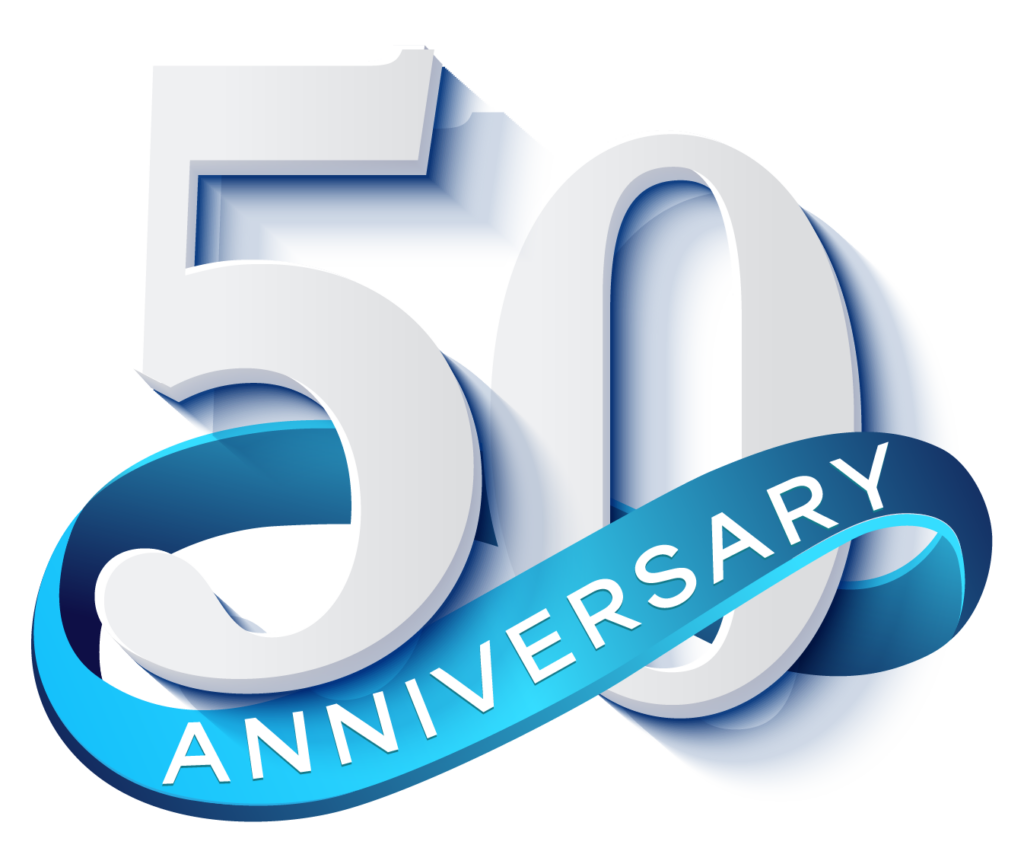Creating a culture of engagement within your organization is a key factor in driving productivity, employee satisfaction, and long-term success. A highly engaged workforce is not only more committed to the organization’s goals but also more innovative, collaborative, and motivated.
A 2024 Gallup study found that 85% of employees are not engaged. But how do we fix that? Fostering a culture of collaboration and team engagement requires a strategic, holistic approach that involves aligning values, empowering employees, and prioritizing communication, well-being, and recognition.
Organizations looking to build such an environment need tools and methods that go beyond surface-level initiatives. This is where Personalysis becomes a transformative asset and how to improve team engagement in a few simple steps.
Personalysis goes beyond traditional personality assessments by offering actionable insights that adapt to real-world workplace dynamics. With that said, here are the essential steps to help your organization build and sustain a culture of engagement.
Personalysis Can Improve Your Company Culture
Align Values and Culture
A strong culture begins with a clear alignment between the organization’s core values and the daily behaviors expected from employees. It’s crucial that every member of the organization feels connected to these values, as they will guide interactions, decision-making, and performance standards.
Define Core Values
Start by clearly articulating your organization’s mission, vision, and core values. These values should reflect what your company stands for and provide a shared sense of purpose. Involving employees in the process of crafting or refining these values is essential to ensure they resonate across the organization.
By seeking input from diverse roles and departments, you not only create values that feel authentic but also foster a sense of ownership among employees. When people feel that their voices matter, they are more likely to adopt and live by these values.
For example, a tech company focused on innovation might prioritize values like “continuous learning” and “customer-first innovation,” ensuring these principles guide everything from product development to customer interactions.
Connect Employees’ Work to the Larger Mission
Employees are more engaged and motivated when they can see how their daily work contributes to the company’s overall mission. It’s crucial to draw a clear line between individual tasks and broader organizational goals. Managers can play a key role here by regularly discussing how specific projects or responsibilities support the company’s objectives.
For instance, a marketing team member creating campaign content should understand how their work drives customer engagement, ultimately supporting revenue growth or brand expansion. Research from Gallup highlights that employees who see how their role fits into the bigger picture are 3.5 times more likely to be engaged in their work, underscoring the importance of this connection.
Make Values Actionable
Core values must be more than abstract ideals; they should be integrated into tangible aspects of workplace practices. Embedding these values into performance evaluations and team goals ensures they become part of the company’s daily fabric.
For example, if “collaboration” is a core value, it should be reflected in how teams set shared objectives and celebrate collective achievements. Similarly, job candidates should be assessed not only for their technical skills but also for their alignment with the company’s cultural values. Reinforcing these principles through recognition programs, such as celebrating employees who exemplify the values in action, can further encourage alignment.
Personalysis Can Improve Your Company Culture
Enhance Leadership Practices
Leadership is a cornerstone of a culture of team engagement. Leaders set the tone for how employees perceive their work environment and their connection to the organization. Leaders need to demonstrate a commitment to transparency, accountability, and trust.
Lead by Example
Leadership starts with modeling the behaviors that reflect the organization’s values and priorities. Great leaders demonstrate accountability by owning past mistakes and visibly committing to learning and improvement. This level of integrity resonates with employees, encouraging them to follow suit.
Research from the Center for Creative Leadership highlights that trust in leadership is among the most significant factors influencing employee engagement. When leaders consistently act with transparency and authenticity, they set the standard for a culture of accountability and trust. For example, a leader who admits to a misstep in a project timeline and openly collaborates on a solution demonstrates the kind of behavior employees are likely to emulate.
Transparent, Two-Way Communication
Transparency and open communication are vital for fostering trust and how to improve team engagement. Leaders must cultivate an environment where employees feel safe sharing feedback, voicing concerns, and contributing ideas. This involves not just delivering regular updates on company objectives and challenges but also actively listening to employees.
Two-way communication should be an ongoing dialogue rather than a one-sided conversation. For instance, leaders can implement regular check-ins or town halls to address employee questions, discuss company progress, and showcase transparency in decision-making processes. Promptly addressing feedback shows employees that their input is valued, further reinforcing trust.
Personalysis Can Improve Your Company Culture
Follow Through on Commitments
Consistency in action builds credibility. When leaders make promises, it is crucial to follow through. This applies whether to implementing a policy, rolling out a new initiative, or supporting individual development. Failing to deliver can erode trust while keeping commitments strengthens leadership credibility and motivates employees to remain engaged.
For example, if a leader commits to improving flexible work policies in response to employee feedback, timely updates and visible steps toward implementation demonstrate reliability. Similarly, advocating for an employee’s career growth by facilitating training opportunities or mentoring reflects a commitment to their success.
Strong leadership is a cornerstone of an engaged organization. Leaders who truly understand their teams can foster trust, communication, and alignment that drives success. Personalysis equips leaders with the tools to deeply understand their teams. By leveraging actionable insights from personality profiles, leaders can navigate complexities, build stronger relationships, and inspire a culture where every team member feels supported and valued.
Personalysis Can Improve Your Company Culture
Empower Employees
Empowerment is at the heart of team engagement. When employees feel their voices matter and that they have the autonomy to make decisions, they are more likely to be motivated and productive.
Leverage Strengths
Helping employees utilize their natural strengths and skills in their work is a powerful way to increase both satisfaction and performance. When employees align their work with what they do best, they feel more confident and energized, which translates into higher engagement.
The previously mentioned Gallup’s research underscores this connection, revealing that employees who use their strengths daily are six times more likely to be engaged. Tools like Personalysis’ personality assessments for the workplace can identify these strengths, enabling managers to assign tasks and projects that maximize individual potential. For instance, a team member with exceptional problem-solving skills might excel in roles requiring critical analysis and strategic planning.
Personalysis Can Improve Your Company Culture
Foster Development
Employees who see a clear path for growth are more likely to remain committed to their roles and the organization. Offering opportunities such as mentorship programs, skill development workshops, and access to online learning platforms can make a significant difference.
Establishing transparent career advancement paths is equally important. Regularly discussing goals and progression with employees demonstrates a commitment to their future and motivates them to pursue excellence. For example, a company might create personalized development plans for employees, outlining milestones and providing the resources needed to achieve them.
Encourage Innovation
An empowered workforce is also an innovative one. Creating an environment where employees feel safe to propose ideas, experiment, and think creatively can lead to breakthroughs in business processes, products, and services. Structured activities like brainstorming sessions, hackathons, or innovation labs can encourage employees to collaborate on solving complex challenges.
Leaders play a crucial role in fostering this culture by actively seeking and valuing employee input. Recognizing and rewarding innovative contributions further reinforces this behavior, motivating employees to think boldly and take initiative.
Personalysis Can Improve Your Company Culture
Prioritize Well-being
Employee well-being directly impacts engagement. A healthy, balanced workforce is more productive, focused, and committed. Addressing employees’ physical, mental, and emotional well-being should be a central component of your engagement strategy.
Promote Work-Life Balance
Work-life balance is essential for maintaining employee satisfaction and focus. Offering flexible work options, such as remote work, hybrid schedules, or adaptable hours, empowers employees to balance professional commitments with personal responsibilities.
Research from the National Workplace Wellness Survey highlights that about 6 out of 10 American employees struggle with work-life balance. Therefore, allowing parents to adjust their schedules during school pick-up hours or providing remote options for employees with long commutes not only improves morale but also enhances productivity.
Holistic Wellness Programs
A robust wellness program addresses the physical, mental, and emotional dimensions of health. Organizations can support employees by offering benefits such as:
- Access to mental health services, including counseling or therapy.
- Physical health initiatives, like gym memberships, on-site fitness classes, or wellness challenges.
- Mindfulness practices, including meditation sessions or apps for stress management.
For example, a tech company might introduce monthly wellness webinars, on-site yoga, or subsidized fitness memberships. These programs contribute to a more resilient workforce by helping employees manage stress and maintain overall health.
Combat Burnout
Burnout is a critical threat to engagement, often stemming from prolonged stress, excessive workloads, or lack of recovery time. Leaders and managers should proactively monitor workloads and recognize early signs of fatigue, such as declining performance or absenteeism.
Encouraging employees to take regular breaks, fully utilize vacation days, and unplug from work during off-hours is essential. Instituting “no-meeting” days or flexible deadlines for non-urgent tasks can also alleviate pressure. For instance, some companies implement mandatory “recharge days” where employees collectively disconnect to reset and refresh.
Interactive Personalysis sessions further enhance collaboration, stress management, and conflict resolution, boosting team cohesion and productivity. Elevate engagement and performance by leveraging Personalysis to unlock your team’s full potential.
Personalysis Can Improve Your Company Culture
Foster Open Communication
Communication is essential for engagement. When employees feel heard and valued, their connection to the organization strengthens. Establishing clear channels for feedback is a critical part of this.
Employee Engagement Surveys
Regularly conducting anonymous engagement surveys allows employees to candidly share their experiences and perspectives on critical aspects like company culture, leadership, and work-life balance. These surveys provide actionable insights that can shape organizational strategies and improve workplace dynamics.
Tools such as Officevibe, or SurveyMonkey make it easy to design, distribute, and analyze surveys while maintaining anonymity. For instance, a quarterly survey can uncover trends in engagement levels, helping leadership identify areas needing improvement, such as workload distribution or recognition practices. Following up on survey results with clear action plans shows employees their feedback is valued and impactful.
One-on-One Meetings
Frequent one-on-one meetings between managers and employees create a personalized space for dialogue. These sessions help managers build stronger relationships with their team members while allowing employees to discuss concerns, provide feedback, and set meaningful goals.
To maximize the value of these meetings, managers should prepare by reviewing performance data, noting recent achievements, and setting a collaborative agenda. For example, a marketing manager might use one-on-one to explore an employee’s interest in leading a campaign, offering both recognition and development opportunities. Such interactions build trust and ensure alignment with both personal and organizational goals.
Personalysis Can Improve Your Company Culture
Culture Committees
Creating a culture committee is an effective way to engage employees at all levels and ensure company values are actively represented in daily activities. These committees can focus on initiatives like planning team-building events, addressing communication gaps, and promoting inclusion within the organization.
For example, a culture committee might organize monthly “lunch and learn” sessions, where employees can share their expertise or hobbies, fostering connection and collaboration. They can also act as a bridge between leadership and employees, collecting and presenting ideas for enhancing workplace culture.
Recognize and Appreciate
Recognition is a fundamental driver of how to improve team engagement. Employees who feel appreciated are more likely to be motivated and loyal to the organization.
Create Robust Recognition Programs
Consistent and meaningful recognition programs celebrate the accomplishments of individuals and teams, highlighting their impact on organizational goals. Recognition can take many forms, from verbal praise in team meetings to tangible rewards like bonuses or personalized thank-you notes.
Digital platforms such as Kudos, Bonusly, or 15Five make it easier to embed recognition into daily workflows, allowing team members to celebrate one another’s efforts in real time. For example, an employee who successfully completes a complex project ahead of schedule might receive a public acknowledgment during a company-wide meeting or a token of appreciation through the platform. These gestures, no matter how small, build morale and reinforce a sense of belonging.
Connect Recognition to Values
Recognition becomes even more impactful when tied to the company’s core values. Highlighting how an employee’s actions embody the organization’s principles reinforces those behaviors and strengthens the company culture.
For instance, if teamwork is a core value, a leader could recognize an employee who went above and beyond to assist a colleague in completing a challenging task. By explicitly linking the acknowledgment to the value of teamwork, the organization not only celebrates the individual but also encourages similar actions across the team.
Creating a culture of engagement begins with building high-performing teams that drive innovation, collaboration, and results. Personalysis’ personality assessment empowers organizations to achieve this by offering actionable insights into individual behaviors and team dynamics. By understanding team members’ strengths, communication styles, and potential challenges, managers can position individuals for maximum contribution, improve communication, and proactively address hidden stressors.
Personalysis Can Improve Your Company Culture
Measure and Adapt
Finally, engagement is a continuous process that requires regular assessment and adaptation. Use data to track engagement levels and adjust strategies accordingly.
Real-Time Feedback
Tracking real-time feedback is crucial for maintaining a pulse on employee sentiment and identifying emerging trends. Employee engagement platforms such as Culture Amp provide tools to gather continuous feedback, enabling organizations to act quickly on concerns before they escalate.
For instance, anonymous pulse surveys can reveal if employees feel supported during periods of organizational change or if workload expectations are manageable. These insights allow leadership to implement timely interventions, such as adjusting resources or communicating more effectively about decisions.
People Analytics
People analytics offers a data-driven approach to understanding engagement at a deeper level. By analyzing metrics like employee turnover, performance, and survey results, organizations can identify patterns that might otherwise go unnoticed.
For example, analytics might reveal that engagement is lower in a specific department due to unclear career progression opportunities. Armed with this information, leaders can design targeted strategies, such as enhanced training programs or mentorship initiatives to address the issue.
Personalysis Can Improve Your Company Culture
Steps to Creating a Culture of Engagement in Your Organization: Final Thoughts
Creating a culture of engagement takes time and effort, but the rewards are immense. Organizations that prioritize alignment, leadership development, empowerment, well-being, communication, and recognition are more likely to see increased employee retention, productivity, and overall success.
Personalysis offers a unique approach to transforming workplace dynamics. More than a personality assessment, it catalyzes strengthening team cohesion and individual empowerment. Start your journey and learn how to improve team engagement today. Schedule a consultation or team-building session with Personalysis and experience the difference in building a cohesive, high-performing culture.




